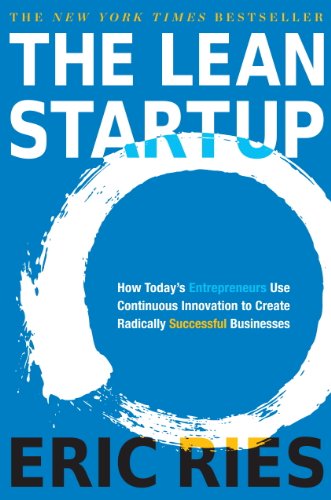

This article is an excerpt from the Shortform summary of "The Lean Startup" by Eric Ries. Shortform has the world's best summaries of books you should be reading.
Like this article? Sign up for a free trial here .
What is a minimum viable product in Lean Startup terms? What examples are there of how to build one?
Learn the 4 critical types of Minimum Viable Product, directly from the book Lean Startup.
Lean Startup Chapter 6: Test
This Chapter is the most important in this Lean Startup summary. We’re going to spend extra time here.
Your goal is to move through the Build-Measure-Learn loop as quickly as possible. Even though the loop has 3 steps, Build is often the step where you will waste the most time.
The critical question you need to answer is: what is the MINIMUM product you can build to get reliable data on your hypothesis?
This product is termed the Minimum Viable Product (MVP) and is one of the most important concepts in Lean Startup. This is the product that is the bare minimum to test your hypothesis. Unlike normal product development, you are NOT aiming for product perfection – you’re merely trying to start learning as soon as possible.
The value hypothesis is key to most startups – “does anyone want what we’re building?” The typical wrong route many entrepreneurs make is to simply build their full product, then wait for results. Here’s the problem – every extra feature you add before testing means wasted time. You might be pointed entirely in the wrong direction. Building features nobody wants means more wasted time before you test and find out you’re in the wrong direction.
Here are a few radical examples of MVPs:
MVP Example #1: The Landing Page MVP
Let’s say you wanted to build a new social app where you take a picture of yourself, and the app swaps your face with celebrities. You can then share the hilarious results on social media. We’re going to call this company CelebrityFaceSwap (we’ll use this example throughout this summary).
You have some assumptions around conversion rates to make the app sustainable – out of 100 people who visit your site, 20 people might sign up, 10 people will stick around for a week, and so on.
Let’s focus on the hypothesis of the 20% sign up rate (20 signups out of 100 visitors). What is the MVP in this situation? Think about it for a sec.
Then come here to learn what a Landing Page MVP is.
MVP Example #2: The Video MVP
Before building a functional product, you can simply make a video simulating what the product does. Even without using the actual product, watching the video will give enough info for viewers to decide whether they want the product shown.
This is what Dropbox did at its beginning. If you haven’t heard of it, Dropbox is a file syncing software that synchronizes your files across your devices. If you upload a Word doc to your Dropbox folder on your laptop, you can then access the same doc on your work computer or your phone.
Read more about how Dropbox launched a billion dollar company with just a video MVP here.
MVP Example #3: The Concierge MVP
Many successful businesses have optimized processes to service at scale. But at your early stage, premature optimization is a huge waste of time. You don’t need to handle 100,000 customers right now. You literally need to make just 1 customer happy.
With the Concierge MVP, you give each early customer the white-glove treatment. You deliver the service personally without worrying about how to scale your time. This lets you figure out whether your solution is anywhere near the right direction, without spending the hard work building efficient processes.
Learn more about the concierge MVP here.
MVP Example #4: The Wizard of Oz MVP
Many startup ideas revolve around fancy automated services, especially those involving machine learning/artificial intelligence. Let’s use an example of an AI gift recommender. You, the customer, write a few sentences about what the gift recipient’s personality and interests are. The product returns 3 Amazon links with products the recipient is likely to enjoy.
This is a pretty complicated product to build. Once again, you don’t want to waste time building the algorithms before figuring out if anyone even wants your service. It might turn out that this concept just doesn’t resonate with people, or that your recommendation strategy is poor.
So how do you test this concept? Once again, you can replace the service with a human. In a Wizard of Oz MVP, the user thinks she’s interacting with an automated product, but in reality behind the curtain a human is pulling the levers.
Learn how to build a Wizard of Oz MVP here.
Want more tips on how to build an MVP correctly? Click here.
———End of Preview———

Like what you just read? Read the rest of the world's best summary of "The Lean Startup" at Shortform . Learn the book's critical concepts in 20 minutes or less .
Here's what you'll find in our full The Lean Startup summary :
- How to create a winning Minimum Viable Product
- How to understand how your startup will grow
- The critical metrics you need to track to make sure your startup is thriving






